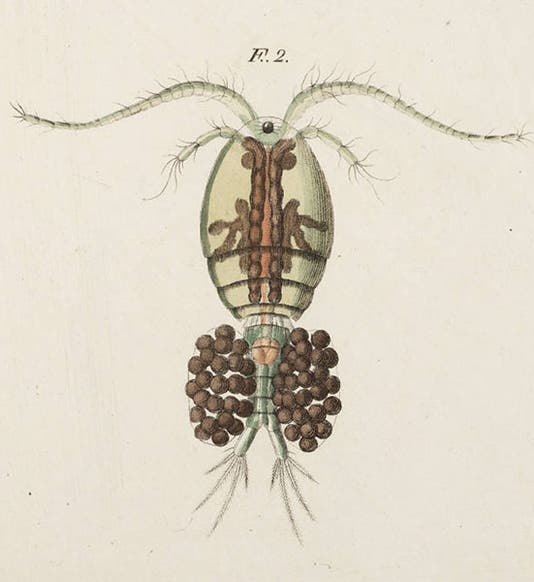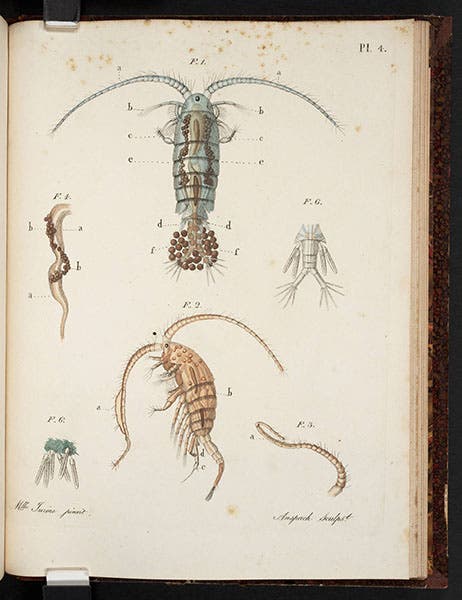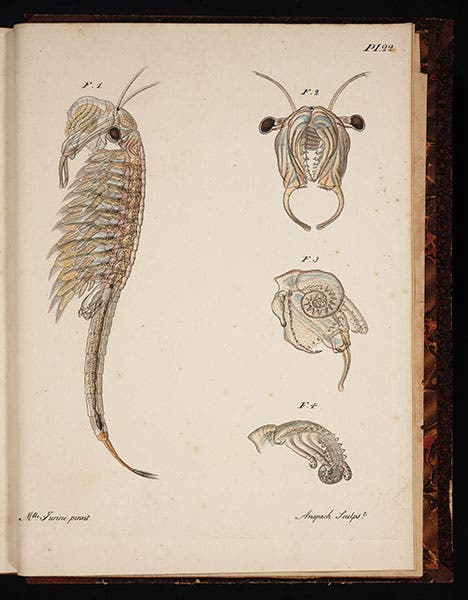Scientist of the Day - Louis Jurine
Louis Jurine, a Swiss naturalist, was born Feb. 6, 1751. When he was 68 years old, Jurine completed a book on copepods. The subject of his attentions sounds much more charming in French, since he called his book Histoire des monocles, copepods being tiny aquatic crustaceans with only one eye, or monocle. Copepods are found everywhere there is water, and in the oceans they make up the bulk of what we call "plankton," providing food for creatures from gobies to baleen whales. But Geneva is a long way from the ocean, and Jurine found his copepods in nearby ponds.
Copepods must be observed under a microscope, and they seldom stand still, so drawing a good picture is difficult, especially for those with 60-year-old eyes. Fortunately for Jurine, he had a daughter with keen vision and considerable artistic skill, and "Mlle Jurine" did all the drawings for Louis's printed book. Sadly, his daughter died in 1812, at age 36, after completing her sketches, and equally sadly, Jurine himself died in 1819 and never saw his book into print.
Histoire des monocles (1820) is a very handsome publication, with 22 color plates of blue, green, and beige crustaceans, and their various parts, over 500 drawings in all by Mlle Jurine. Our first three images show various species of copepods.
A detail of another plate shows a tiny crustacean previously known as Nauplius (fourth image, figs 17-19). Jurine showed that Nauplius was not a separate organism, but in fact just a larval stage of his monocles.
Although the book is famous among copepodologists, many of the plates in Histoire des monocles depict Daphnia (fourth image) and fairy shrimp (fifth image), neither of which are especially close relations of copepods. But Daphnia are indeed "monocles".
We included Jurine's book in our Grandeur of Life exhibition in 2009, where you can see two more details from Mlle Jurine’s drawings of copepods.
Dr. William B. Ashworth, Jr., Consultant for the History of Science, Linda Hall Library and Associate Professor, Department of History, University of Missouri-Kansas City. Comments or corrections are welcome; please direct to ashworthw@umkc.edu.







![“Aurora Borealis,” hand-colored wood engraving by Josiah Wood Whymper, [Natural Phenomena], plate 2, 1846 (Linda Hall Library)](https://assets-us-01.kc-usercontent.com:443/9dd25524-761a-000d-d79f-86a5086d4774/0245ffcb-b70c-477c-8792-0a73ebd54eb2/Whymper%2011.jpg?w=210&h=210&auto=format&fit=crop)



